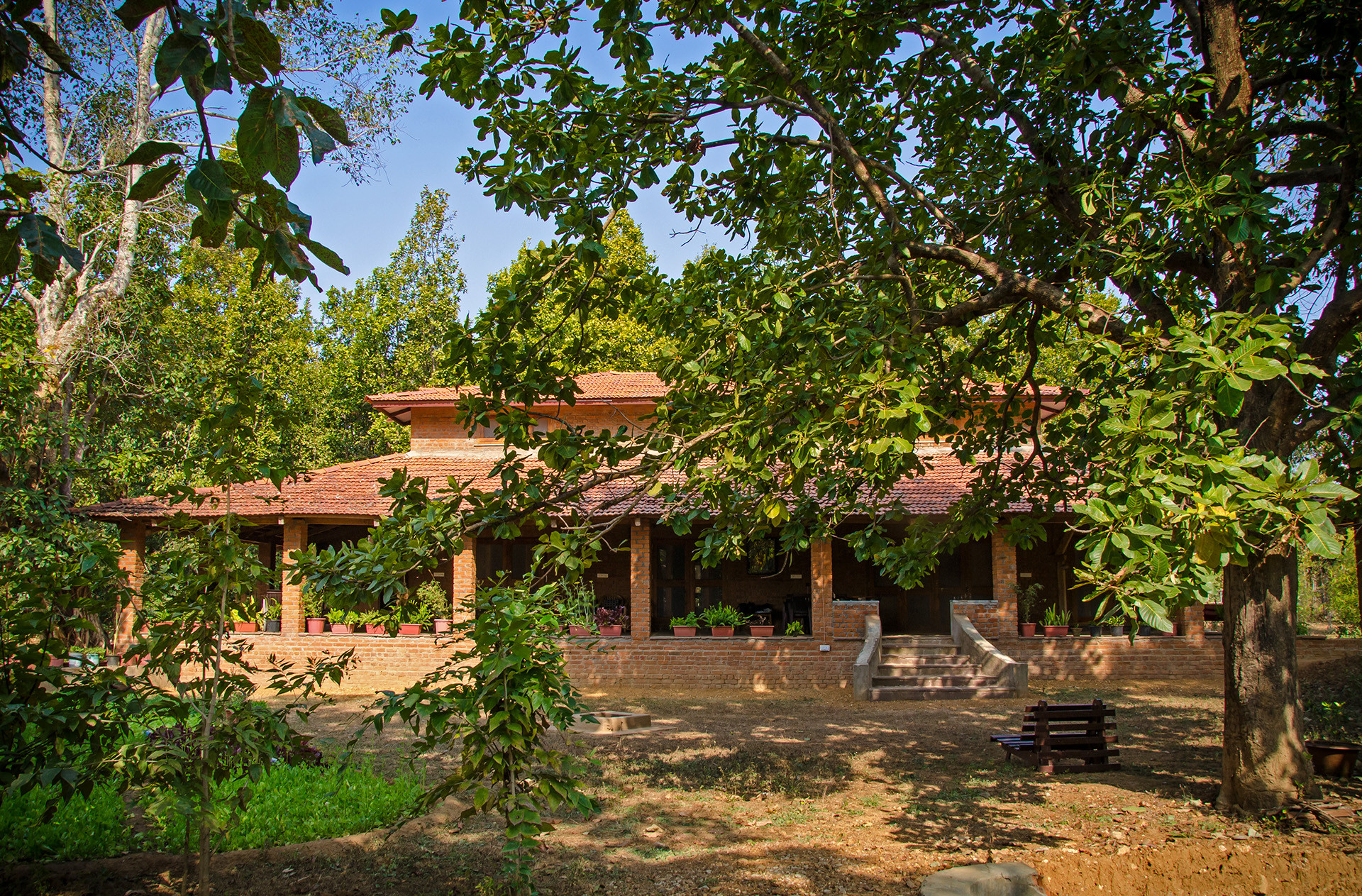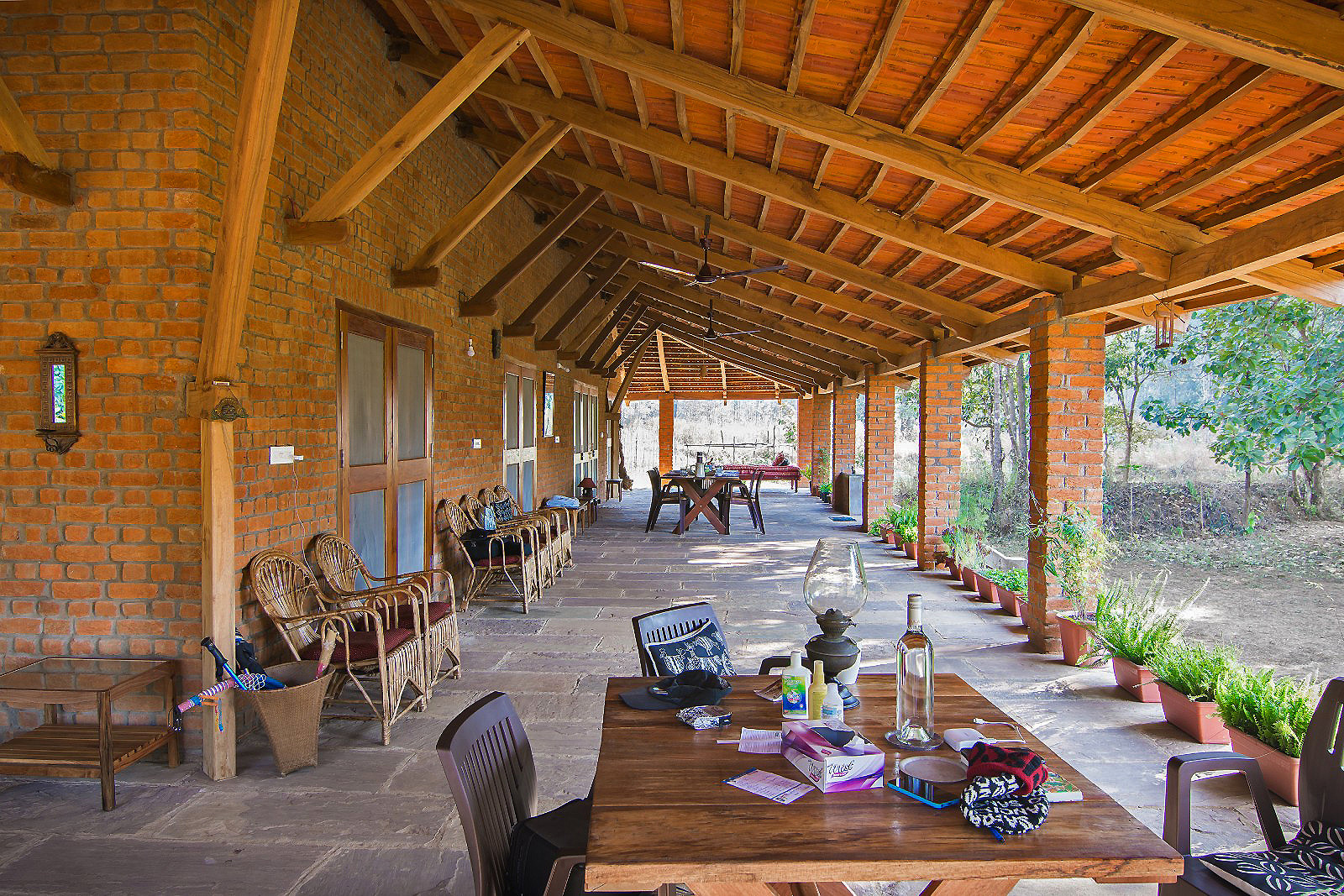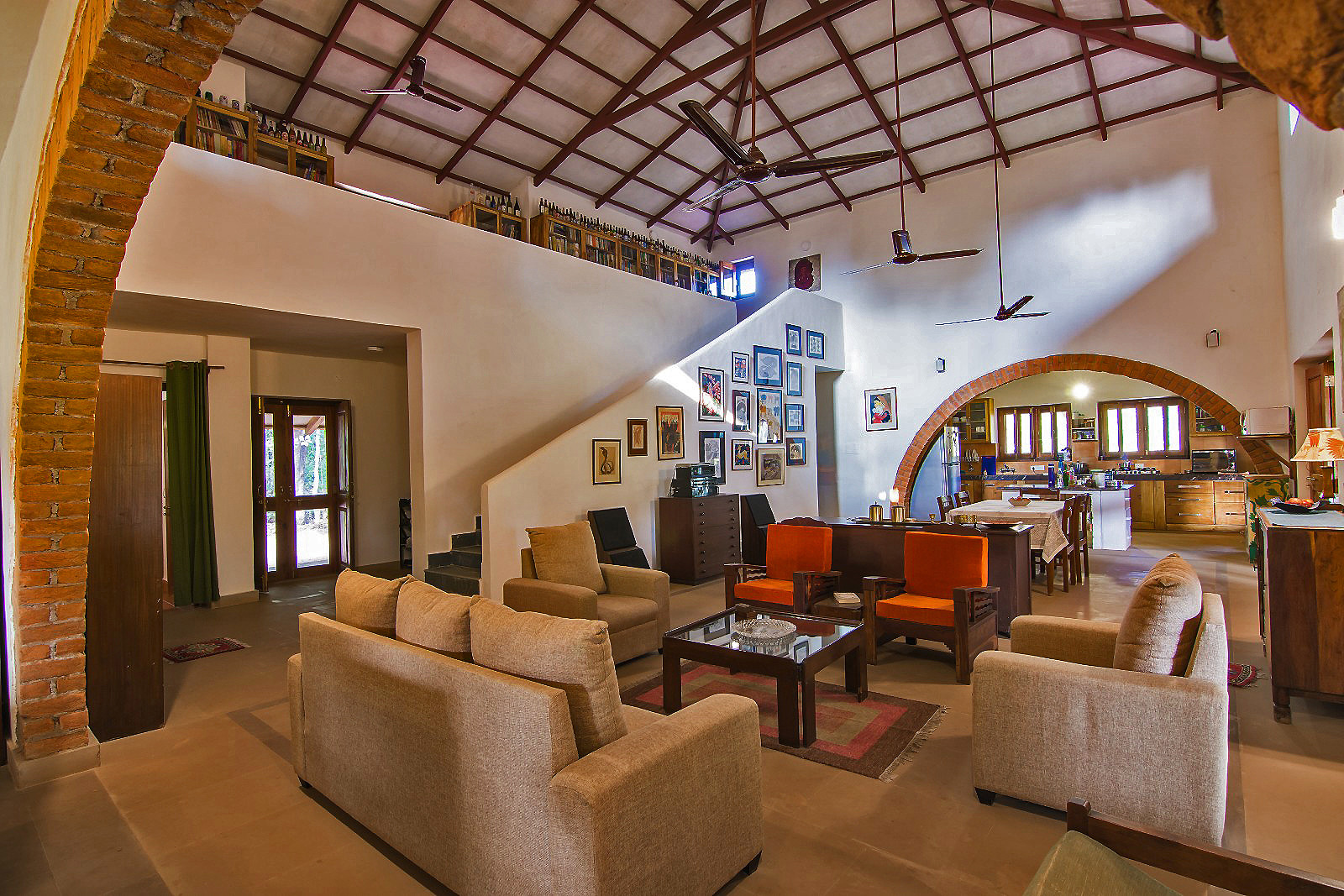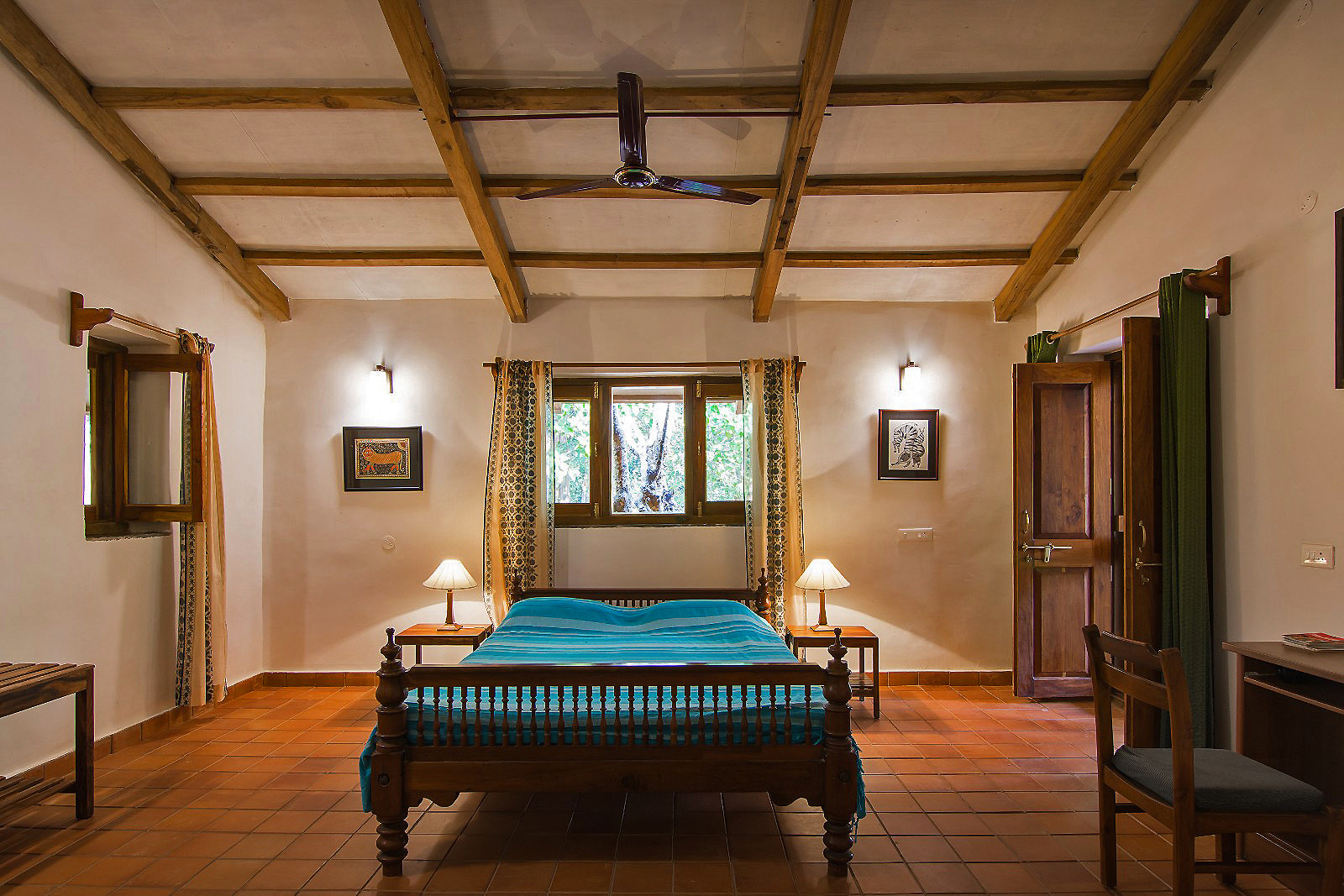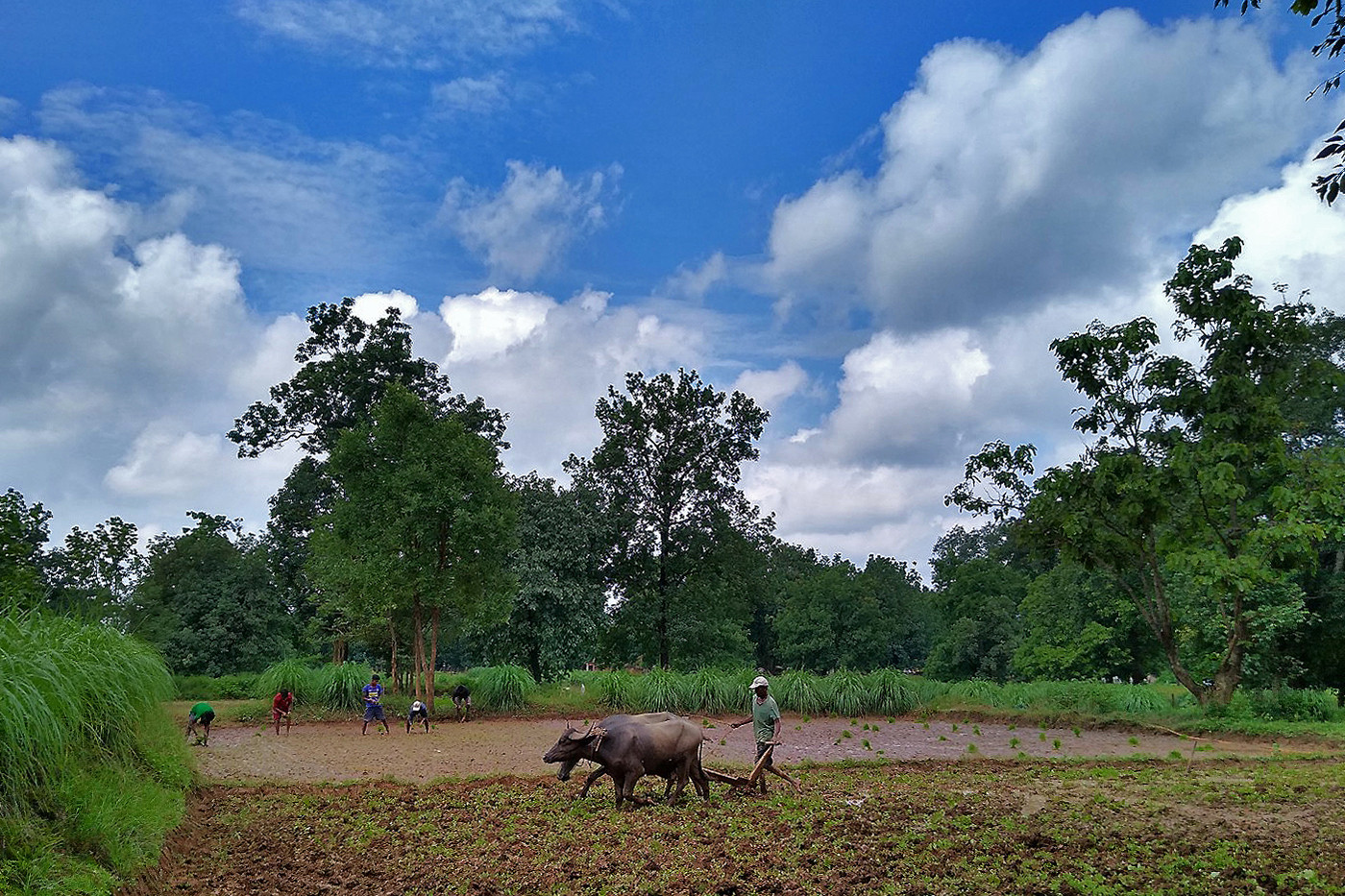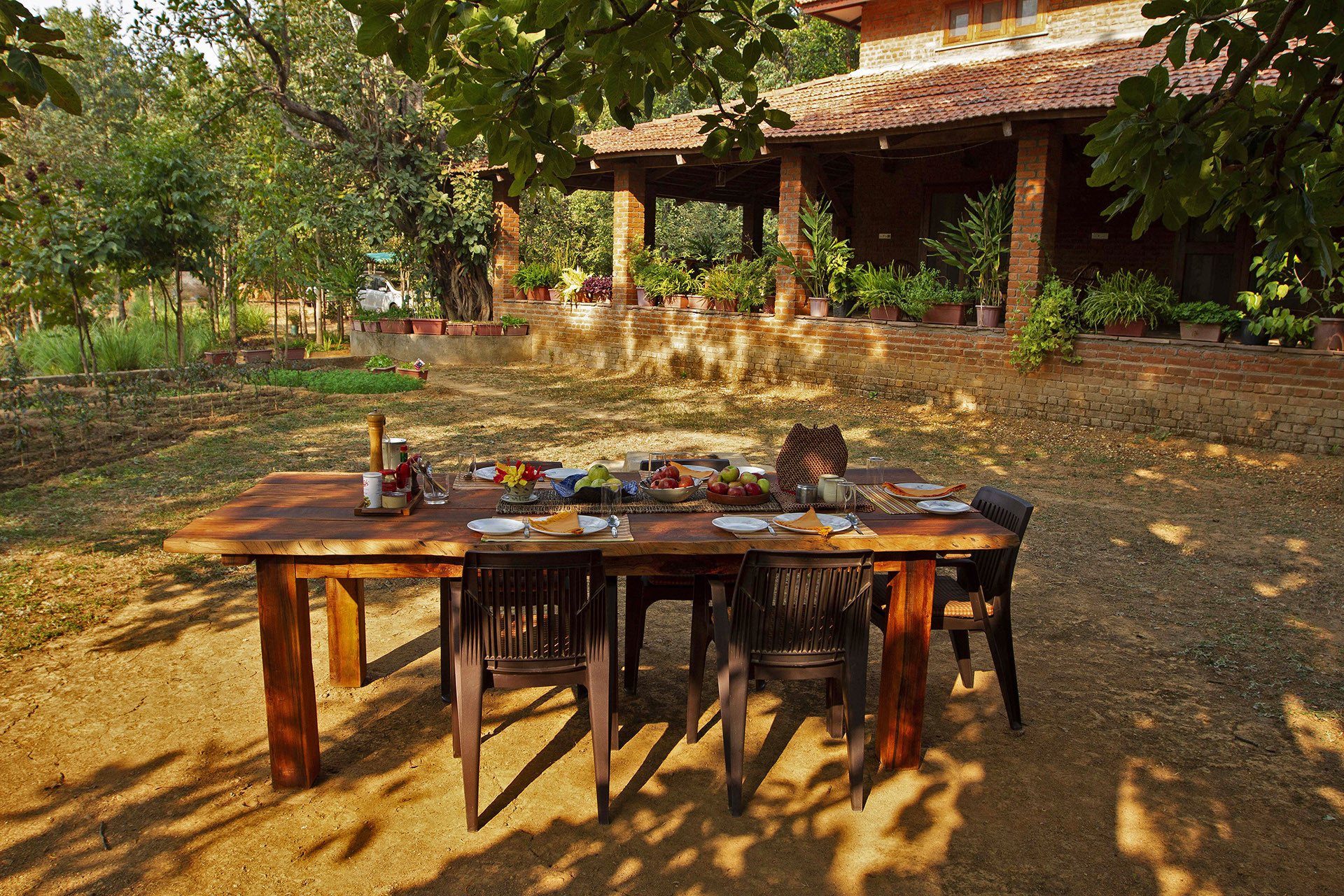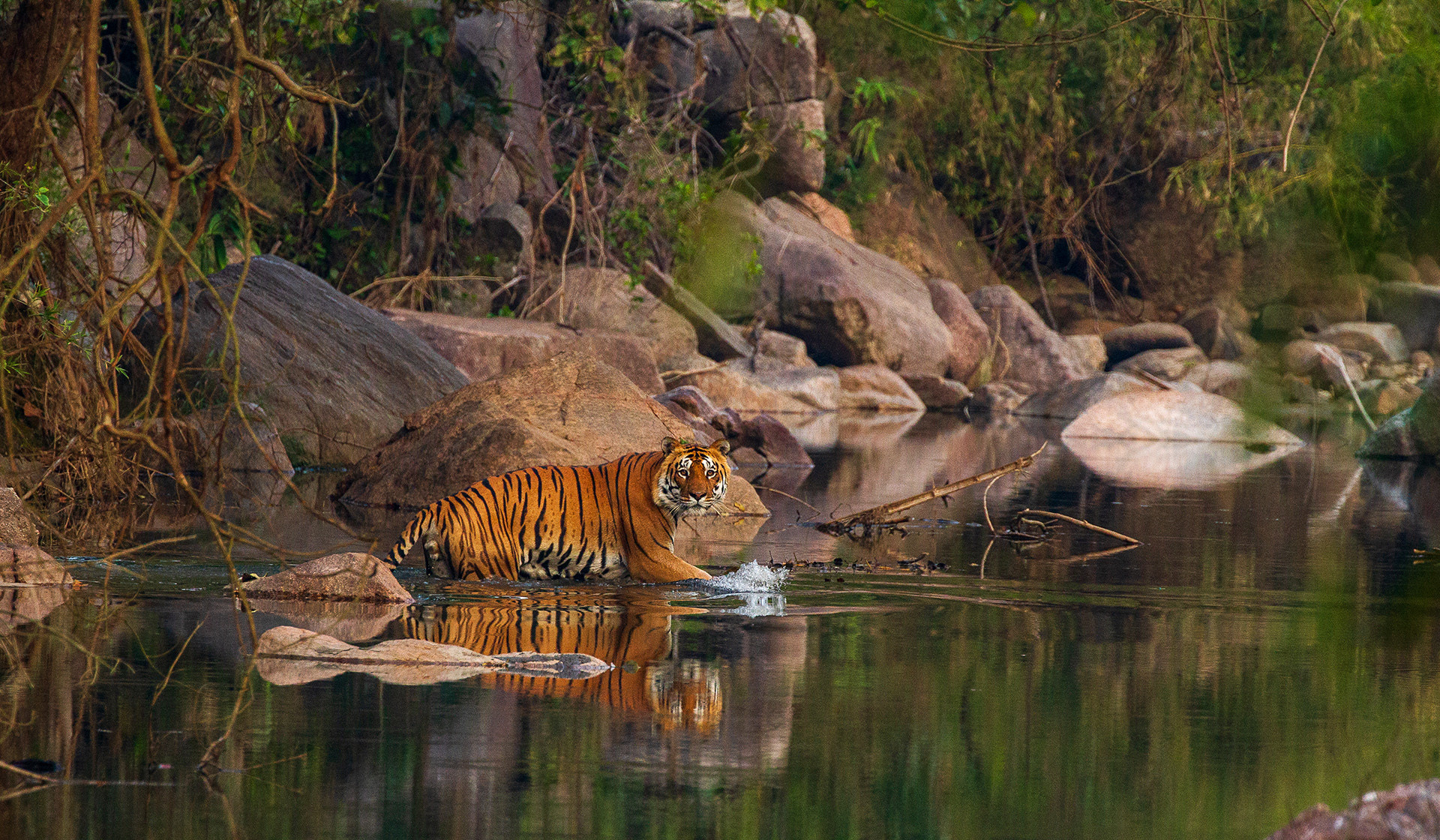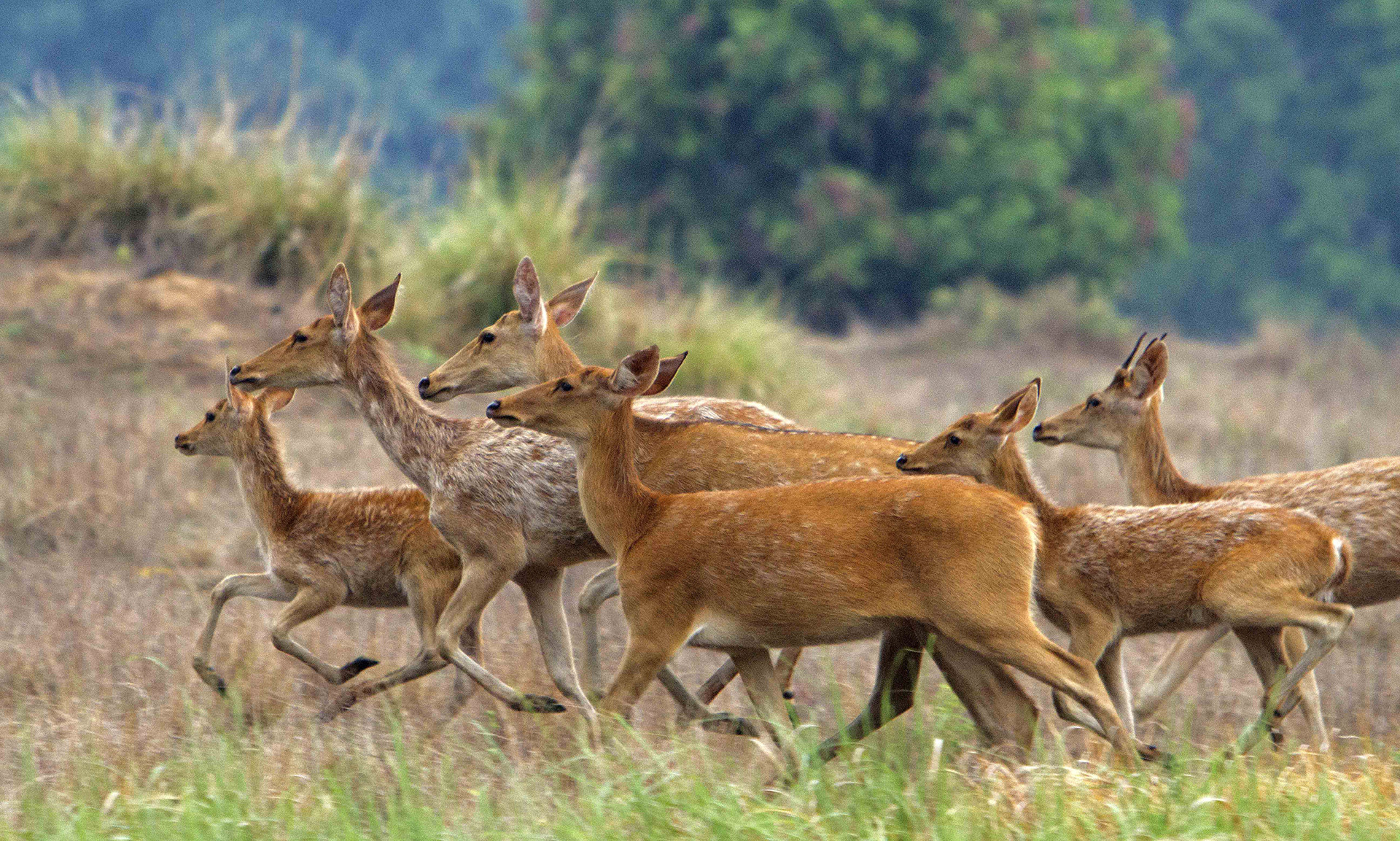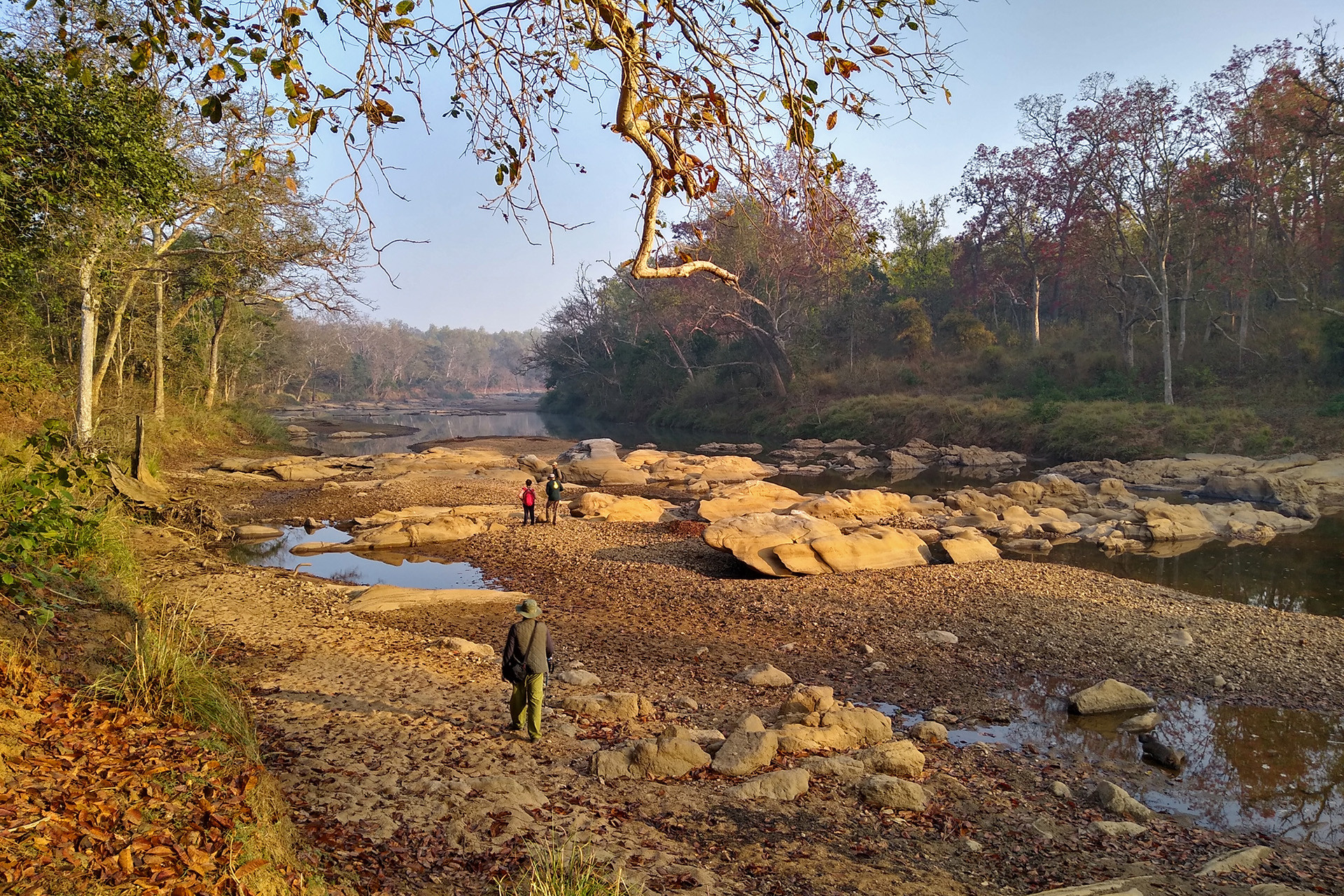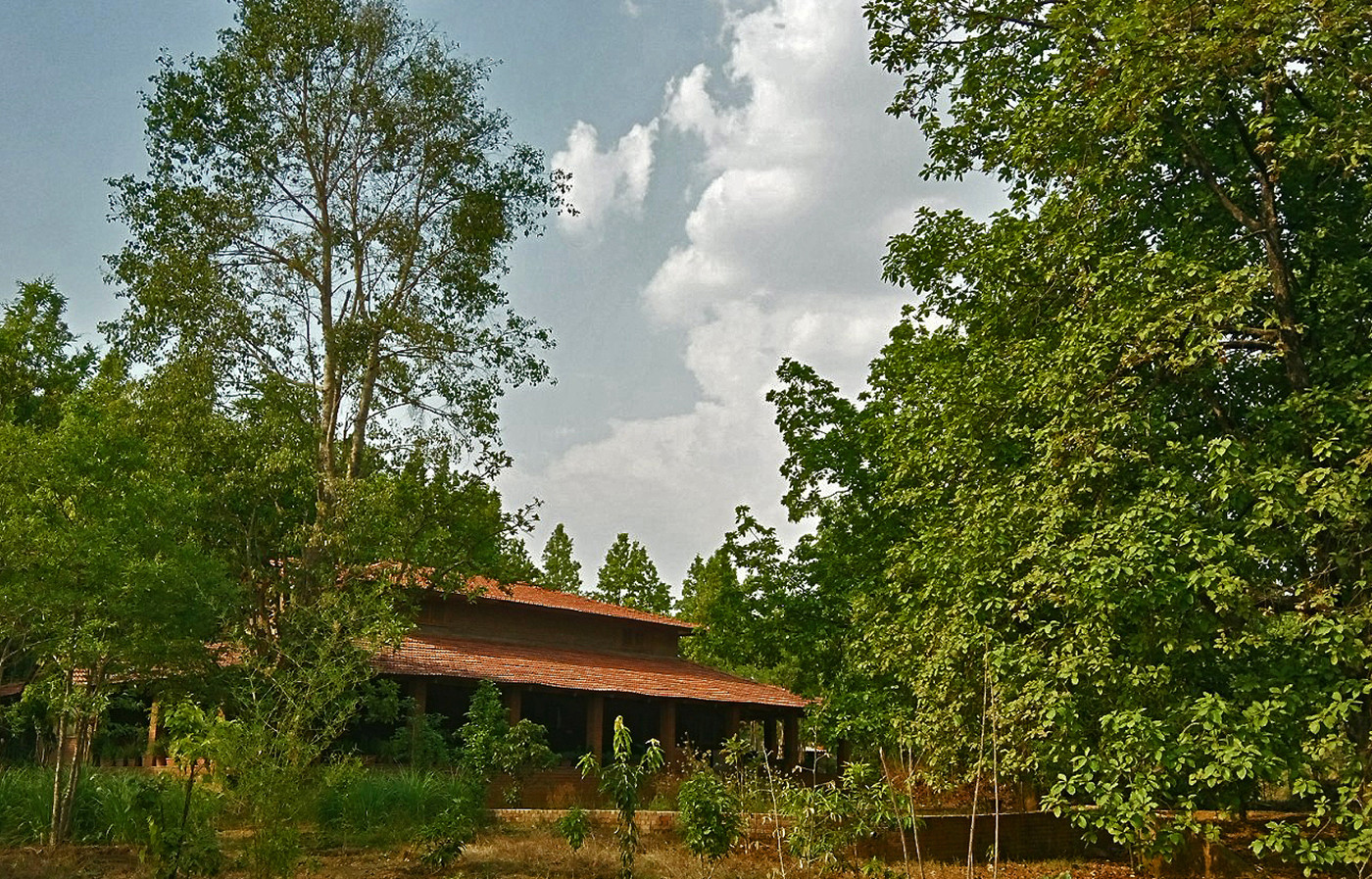Location
Contact
See | Do
- Safaris to Kanha National Park
- Guided walk in the buffer zone along the Banjar river
- Birdwatching
- Strolls to the two picturesque lakes behind the property
- Learn about the 120 different indigenous trees that have been planted at Salban
- Explore the farm and vegetable garden
The little village of Baherakhar is largely untouched by modernity. Most of the houses are still made of pressed earth, the roofs have irregular red tiles, each home is fronted by a barn for cattle and fodder, and large ficus and mahua trees shade the courtyards. It is situated in the buffer zone of Kanha National Park, 7km from the Mukki Gate. As you reach the bus-stop cum cycle-repair shop of the village, a mud track winds behind it to lead up to a rust-red gate with a weather-beaten, hand-painted wooden sign that reads ‘Salban’. A friendly face opens the gate and you drive up to a large, sprawling bungalow that is very similar to most of the village homes, but several times larger. The entrance steps are dominated by a tall peepal tree, but its trunk is a medley of three more trees that you realise are growing in unison. All around the house are thick stands of sal trees, giving rise to the name Salban that simply means sal forest. Further exploration will have you realise that the property shares a common boundary with the core zone of the park, where one often hears alarm calls of deer and langurs and the rare growl of a tiger.
Accommodation
Salban is the residence of Sheema and Aniruddha (Jhampan) Mookerjee, who relocated to Kanha in 2016 after leading a busy professional life in Delhi. Built in local architectural style, the roof is split into two levels – the lower level shading the enormous veranda and ground floor bedrooms, and the upper roof covering the high-ceilinged central living space and a single upper bedroom. Only, in the case of Salban, the roof tiles are symmetrical Mangalore tiles sourced from Balaghat, rather than the quaint village ‘kavelus', and the walls are made of bricks rather than pressed mud. Mud mortar has been used, however, in place of cement and the exposed bricks on the outer walls give the bungalow its stand-out red appearance.
The veranda serves as a living space too. There is a large dining table and smaller seating arrangements in friendly clusters, where meals are eaten facing the green open space that is populated with numerous fruiting trees, bamboo clusters, and large older trees like mahua, lendia, tendu and ficus. Further on is the ever-present sal forest that never loses its foliage and lends to the cool and oxygen-rich atmosphere that resuscitates the weary urban soul. An enormous four-panelled door leads into the living room and what hits you first is the 30-feet-high raftered ceiling. The second most striking feature is the soothing white walls decorated with an eclectic collection of paintings of the Mookerjees – tribal art, sketches of animals, traditional oils, and framed family photos. The furniture neatly blends into this medley and the overriding impression is that of a well-lived home. Two exposed brick arches separate the open kitchen and the lounge on either end of the large, multi-storeyed living room.
The homestay has four rooms in all, of which only two are housed in the main building. The other two are in a cottage situated closer to the sal forest. The rooms are large and spacious and have all the essential furniture for a comfortable stay – a luxurious double bed (that can be separated into twin beds), a desk, cupboard, luggage bench and an armchair. The furnishing is ethnic handloom and none of the rooms are uniform or identical. The ground floor room in the main house has an interesting collection of tiger paintings. It also has a private sit-out and a large, well-lit attached bathroom. The upstairs room (also with an attached bath) has an expansive dormer window affording a view of the treetops and open sky. It leads in from the staircase corridor that houses a vast library of books ranging from natural history, non-fiction, literature, crime, cookery, history and art.
Across the mahua-shaded compound is the cottage that is of Jhampan’s planning and design. The cottage is made of large sun-dried mud bricks and has the signature red-tiled roof. The two mirror-image bedrooms are self-contained and have attached bathrooms and pleasant sit-outs that face the sal forest. Large and colourful Gond paintings stand out on the wall behind the double beds, adding to the rustic character. As with the main house, all the materials are locally sourced. The veranda and bathroom tiles are of simple kadappa and kota stone, and the bedroom floors are fitted with terracotta tiles, adding to the natural look. There is not a single synthetic building material in sight anywhere.
Food
“It is quite unusual, but Salban is growing into a gourmet destination here in the middle of the Kanha forest,” muses Sheema. “There is not a single review that does not mention the food, and Lonely Planet names our little homestay as one of the top five places to eat in Madhya Pradesh.” The passion the Mookerjees put into the planning and execution of meals is apparent from their constant presence in the friendly, open kitchen that is always buzzing with activity. Dishes from around the world make their appearance at the table. You will find hearty Thai curries spiced with home-grown lemongrass, galangal and kaffir lime; authentic pasta dishes prepared with roast peppers, garden-fresh oregano and basil, along with generous lashings of Parmesan and olive oil. Jhampan’s grilled chicken, roast leg of lamb, and mutton confit with orange sauce have become the favourite fare of the meat-loving visitors.
Sheema, on the other hand, prepares homely Indian lunches with a variety of tasty daals, salads and other vegetarian delicacies. She also loves experimenting with the wide variety of produce grown on the Salban farm; kodo (wild millet) pancakes garnished with tree-ripened fruit and wild honey, desserts sweetened with mahua treacle and mahua raisins, black rice salad, kodo upma and kodo fried rice among other dishes. Several varieties of rice (brown, white and scented) and tasty strains of M.P. wheat are grown in the Salban farm, all of which are served at the table. The Mookerjees love customising food to their guests’ taste, and meals are spontaneously planned, unlike the fixed menu in most professional resorts.
In winters, the open-air breakfast under the mahua tree is a great hit. Guests bask in the sun and linger over their Blue Tokai coffee, masala chai or Darjeeling tea long after the plates are cleared. Lunches are always had in the veranda, and while the staff keeps an attentive eye on whose plate is empty or who needs a hot roti, your imagination can wander over to the clump of mahua trees or the vegetable and herb garden that is in front of you. Evening drinks are had around a cosy bonfire in the open, or in the veranda when the weather is too warm for a fireside adda. Dinner is a more formal affair at the family dining table in the living room. This is when the family crockery and silverware are laid out and stories of the Mookerjee obsession with food abound.
Activities
At Salban, you get to experience the tranquil harmony between the untouched forests and the simple life of the villagers who live in its fringes. Don’t visit Salban with the single-minded aim of seeing tigers (like many who book a Kanha holiday). Instead, revel in the walks, farm explorations, and discovery of birds, butterflies, smaller fauna and indigenous plants and trees.
However, to rank the list of activities you can indulge in during your stay at Salban, one would have to put Kanha safaris at the top of the list. Book as many safaris as time and budget affords (four to six safaris is optimum to get your fill of the forest and its flora and fauna). You can do this through Salban and they will help you plan the zones, as well as how many morning and evening rides to do.
Another highlight is a guided walk through the forest and along the picturesque Banjar river, accompanied by a forest department guide who helps you experience the various facets of traversing the jungle on foot. Besides these organised activities, you can walk to two picturesque lakes in Baherakhar village, observing village life as you stroll by. Spontaneous walks around the 11-acre property can lead to a rich exploration of butterflies, insects and birdlife. Common birds that can be seen and heard from your rooms or the veranda are drongos, orioles, treepies, woodpeckers, coucals, bulbuls, mynas, flycatchers, owlets, babblers, leafbirds, sunbirds…the list goes on. You can also enrich your knowledge of the trees and plants of central India on your strolls with Jhampan. The list of indigenous trees in the property is touching 120, and Jhampan keeps planting more to add to the biodiversity and recreate the typical mixed forest found in the region. There are also fruit trees like mango, chikoo, avocado, mulberry, banana, orange, sweet lime and several lemon varieties from all over India.
Responsible Tourism Initiatives
Salban is a small, local and sustainable homestay that gives you the most authentic experience of life in the fringes of a national park in central India. The building blends in with its surroundings and only its red-tiled roof is visible from a distance. Although the land had old trees and patches of sal forest, any bare land has been greened by planting more trees, shrubs and bamboo. The farmland is usually lush with paddy or wheat, and the newly-planted mango orchard of around 100 trees has started to bear fruit.
The architecture of the bungalow is as vernacular as can be (designed by M+P Architects Collaborative, Pune), using the local style and utilising as little concrete as possible. All the wood, stone and tiles have been sourced from within neighbouring districts, keeping the carbon footprint as low as possible. The cottage built for guests is a step further in sustainable building, using only pressed, sun-dried mud bricks. No air-conditioning is needed at Salban, and the hot months of May-June can be tided over with just air-coolers. Neither is there a swimming pool or landscaped garden – both of which need a lot of water for upkeep. The entire staff of the homestay are men and women from the neighbouring villages, who have been trained from scratch by Sheema and Jhampan. Hiring trained hospitality staff from outside was never a part of the plan.
The vegetable garden and farm are fed with compost made in vast quantities from leaf litter and other organic waste. Jeevamrut organic fertiliser is also made in-house to add supplementary nutrition. With no chemicals in the soil and plants, the butterfly and insect life is abundant, and naturally so is the birdlife. The Mookerjees steer clear of guest activities like tribal dances and visits to tribal homes, as they feel this form of superficial interaction is invasive and disrespectful of the local villagers. Instead, they encourage guests to revel in nature and to observe village life in such a way as to appreciate how one can live in harmony with one’s natural surroundings.
